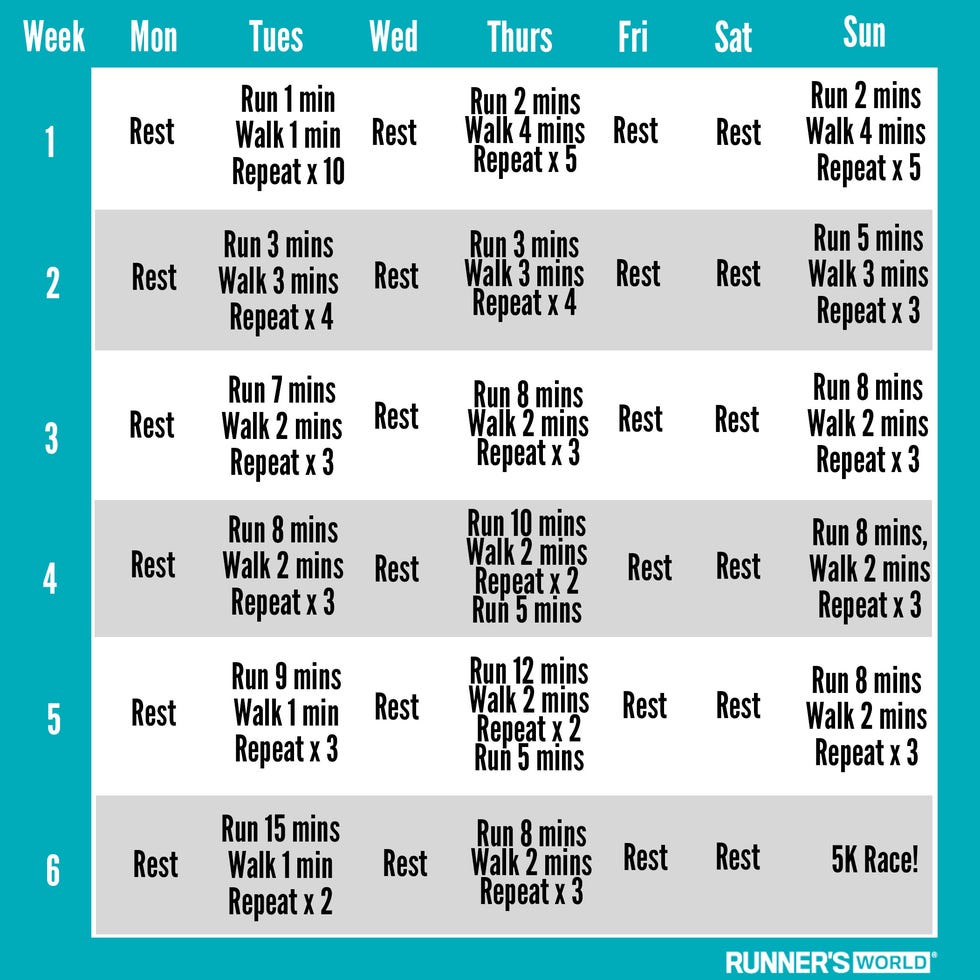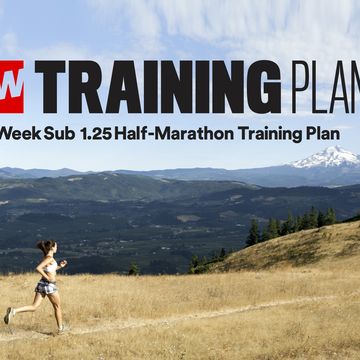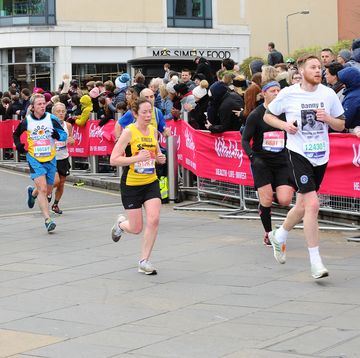If you've never run before or are stuck in a running hiatus, you might feel confused and concerned about putting one foot in front of the other. What kit do you need? How fit should you be? And how do you even get going in the first place? If you're inspired to start running but don't know where to start, you'll be in safe hands with our beginner's Couch to 5K training plan, which will build you up to completing the 5K distance.
By following the Couch to 5K training plan below, you'll build your strength, fitness and confidence in just six weeks – and feel healthier, happier and more comfortable on the run.
What does the Coach to 5K training plan involve?
Our Couch to 5K training plan starts with a series of run-walk intervals, gradually increasing your time spent running until you can complete the full 5K distance.
But why are there walk intervals? Well, when we start running, our bodies need time to adapt to the new demands we're placing on them and get used to absorbing the impact. By adding short, structured walk breaks into sessions, we can gradually build our running volume over time at a safe rate.
If you start this Couch to 5K plan and feels that it's too easy for you, or are already used to running for up to 30 minutes a few times a week, then take a look at our intermediate 5K training plan instead – this might be a better match for your current fitness levels.
As you progress through the six weeks of this Couch to 5K programme, you'll gradually spend less time walking and more time running, until you can eventually run the full 5K distance non-stop.
Running 5K is a great goal for beginner runners. With events like parkrun – the free, weekly 5K – taking place in locations across the UK and beyond, it's never been easier to test yourself over the distance in a welcoming, inclusive environment.
The history of the Couch to 5K plan
The original Couch to 5k training plan was devised by American Josh Clark in the mid-1990s. While he wasn't a runner at the time, Clark decided to take up running after a break-up during his early 20s. He found it to be 'punishing and painful' at the start, but persisted – it then started to feel good, 'physically, mentally and even spiritually'.
It was during this period of running enlightenment that Clark created a plan to help his mum get into running, too. He wanted to introduce it more gently to her, so that she could see the rewards and avoid what he called, in a BBC interview, the 'dreary horrible ramp-up' that he had experienced.
The result was the Couch to 5K plan, which he put online in 1996. Word of its benefits and success began to spread, running communities grew and, by the mid-2000s, it was rocketing in popularity. Since then, Clark estimates that tens of millions of people have benefitted from the programme – and even the NHS recommends it.
Your Couch to 5K questions answered
Before you start your Couch to 5K training, it's a good idea to have the right kit, nutrition and pre- and post-run routines in place to help you feel comfortable and committed to your running journey – here's some useful information to get you off on the right foot.
What running shoes do I need?
One of the many great things about running is that you don't need too much kit to get started – and you don't need to fork out a fortune. Most importantly, you'll need a sturdy and supportive pair of running shoes that fit well and allow your feet to breathe while crucially absorbing impact from the ground and offering enough energy return to keep you moving with ease. If you're a beginner, it's worth visiting a specialist running shop first to establish your running shoe size, gait and preference. We've got a great list of beginner-friendly running shoes on our website, as well as a handy round-up of the best running shoes for £100 or less.
Do I need to stretch for running?
It's important to warm up properly before a run – it increases your heart rate and blood flow and enables more oxygen to reach your muscles, preparing you for the task at hand and reducing your risk of injury. Doing some dynamic stretches (as in, stretches that involve movement) and warm-up drills can effectively prime both your body and your mind for a run.
Runners should always stretch after each run, too, as it helps to release muscle tension and aid recovery by increasing blood flow. If you’re not sure where to start, have a look at our essential guide to post-run stretching.
Should I do any cross training?
Incorporating cross training into your routine is a brilliant way to supplement your Couch to 5K running, as it helps to build strength, reduce your injury risk, improve your overall fitness and add interest and variety to your exercise plan. The most popular forms of cross training include cycling, swimming or using the elliptical – but we advise you to stick to the activities that you enjoy the most.
Does nutrition matter?
To get the best out of your Couch to 5K plan, you’ll be wise to think about the food that you eat to support your physical training. Sticking to a healthy and balanced diet will keep you fuelled for your runs and assist in speeding up your recovery time, so aim to consume a good amount of protein and plenty of carbohydrate, especially before your longer sessions. Remember to drink plenty of water, too, and consider taking electrolytes to replace salts lost through exercise.
Is it normal to feel pain when you start running?
It's perfectly normal to feel some aches and discomfort when you first start running, as your body needs time to adapt to the new demands you're placing on it. However, pain isn't normal. If something feels so sore or acute that you have to run with a limp or alter your stride, for example, then you could be injured. In this situation, stop running immediately and take a few days off. If, after this time, the pain persists, consult a physiotherapist or your GP, if possible. It's always better to err on the side of caution and choose rest and rehabilitation over an attempt to stick with your plan – otherwise, you risk making any injury even worse.
The Couch to 5K training plan
The best thing you can do to level up your running is to follow a well-structured plan. Our six-week Couch to 5K plan tells you exactly what runs to do and when, providing plenty of support, accountability and motivation. If you need to be flexible and move around or skip a couple of sessions due to family commitments, illness or other such events, don't worry too much – life can get in the way sometimes.
Doing a 5K race is a great way for you to showcase your Couch to 5K training and feel the buzz of the running community. On the day, you might find that you can run for at least 20 minutes before you need a break – that's completely fine, and normal. Start slowly, enjoy the moment and don't wait until you are exhausted before taking some one-minute walk breaks. Good luck!














